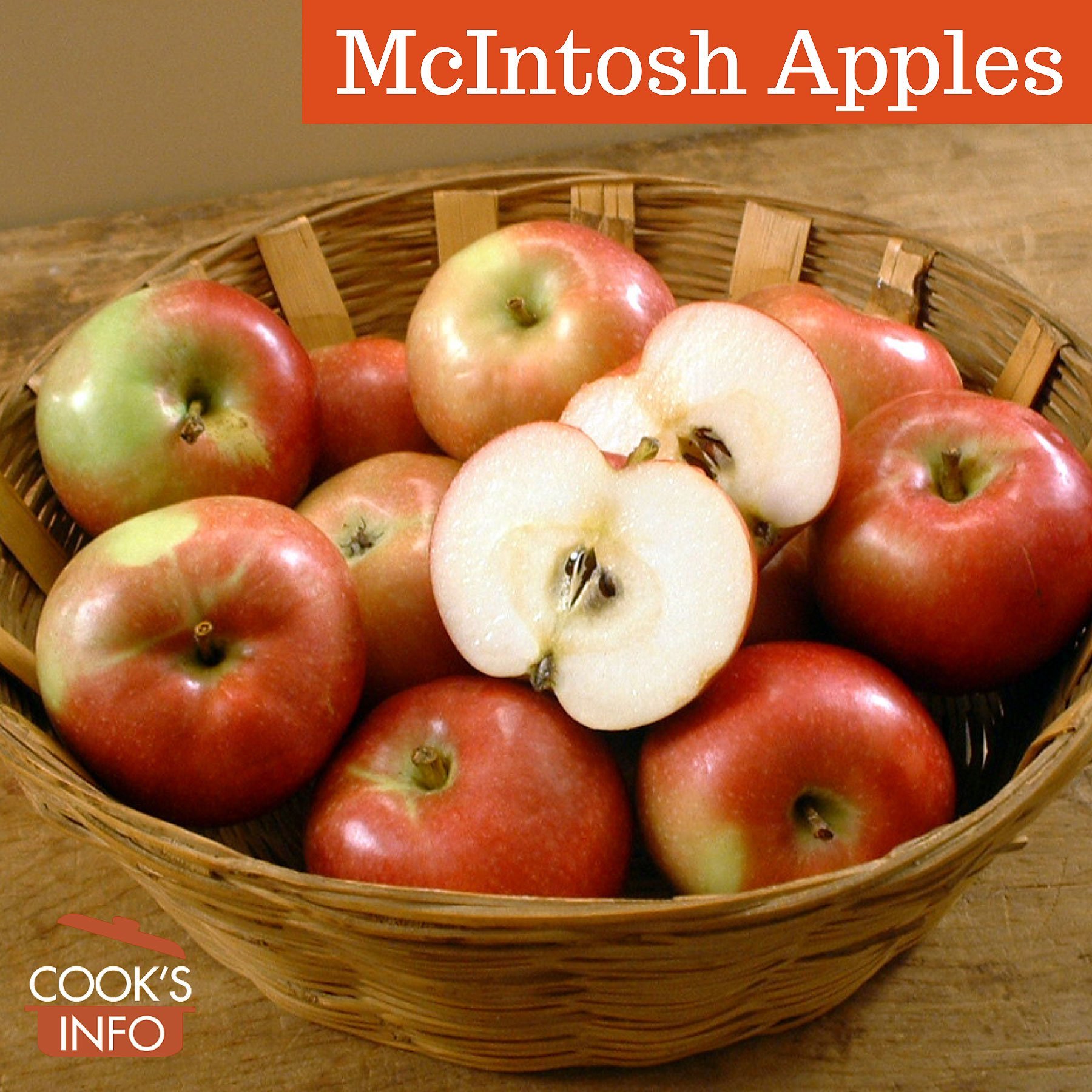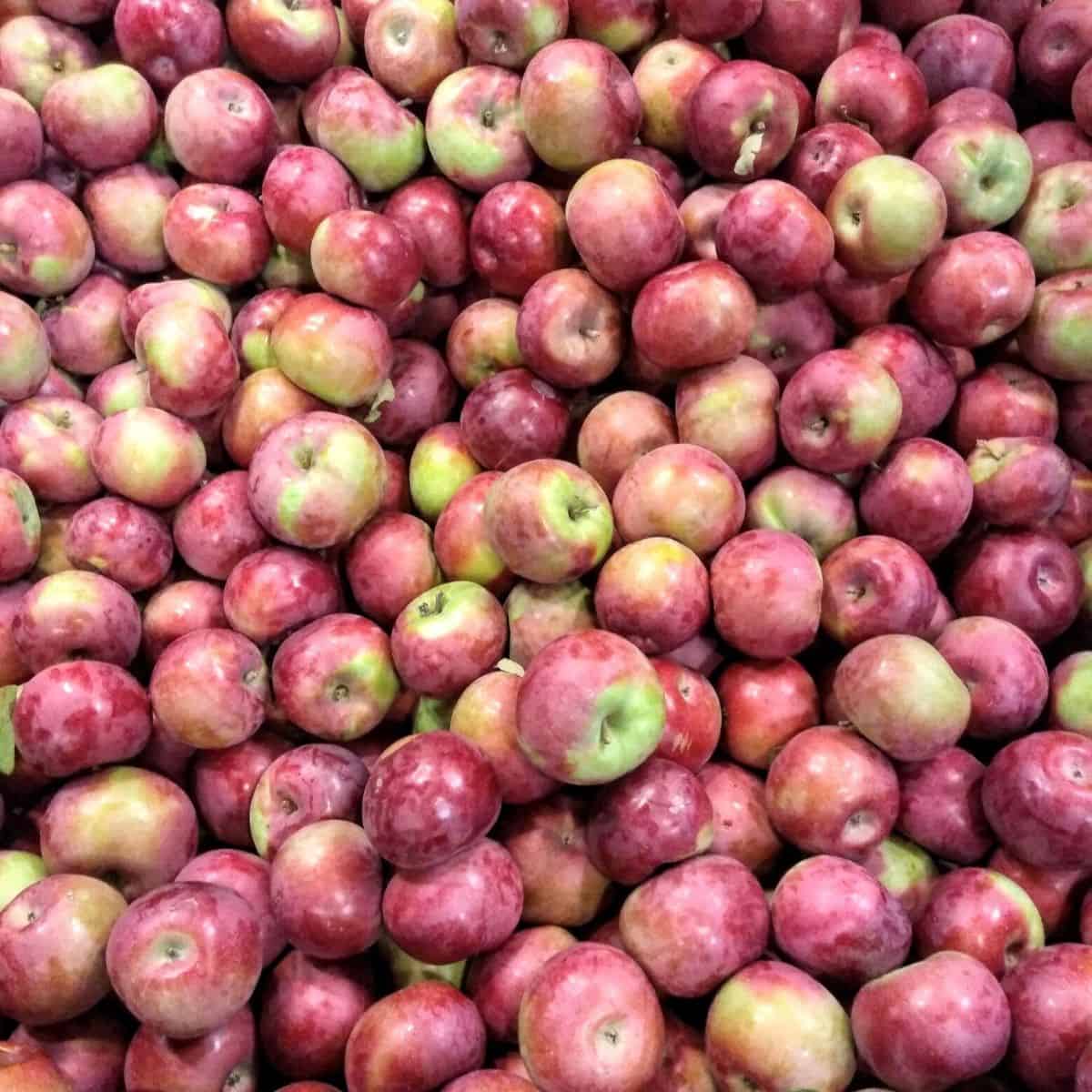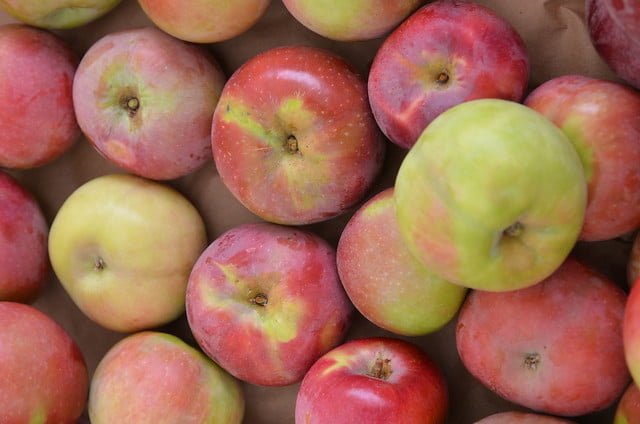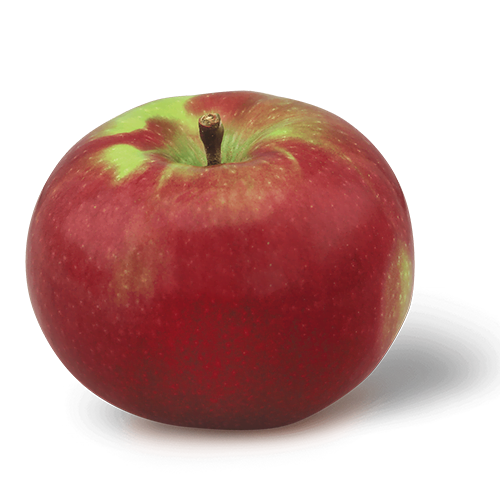Have you ever found yourself searching high and low for a juicy, crisp McIntosh apple, only to come up empty-handed? Well, you’re not alone. McIntosh apples, with their distinct tartness and sweet flavor, seem to be remarkably elusive in the vast array of apple varieties available. But what makes them so difficult to find? In this article, we’ll uncover the reasons behind the scarcity of McIntosh apples and explore just why these delectable fruits seem to be playing hide-and-seek with us.

The History of McIntosh Apples
Origins of the McIntosh Apple
The McIntosh apple, known for its distinctive red and green skin and sweet-tart flavor, has a fascinating history that dates back to the early 19th century. It was discovered by John McIntosh in the early 1800s on his farm in Dundela, Ontario, Canada. McIntosh originally thought the apple had grown naturally, but it is now believed to be a chance seedling from an unidentified variety.
Introduction to the Market
After McIntosh discovered the apple, he began growing it on a larger scale and selling it locally. Word spread about the apple’s delicious taste, and it gained popularity in markets across Canada and the northeastern United States. By the mid-1800s, the McIntosh apple had established a reputation as a high-quality fruit, loved for its unique combination of sweetness and tartness.
Popularity and Demand
As the McIntosh apple gained popularity, its demand skyrocketed. Consumers were drawn to its crisp texture, juiciness, and balanced flavor. The apple became a staple in households and was used for both eating fresh and cooking. Its popularity continued to grow throughout the 20th century, making it one of the most beloved apple varieties in North America.
Challenges in Commercial Cultivation
Suitability for Growing Conditions
While the McIntosh apple thrived in the cool climate of the northeastern United States and Canada, its suitability for other growing conditions presented challenges. The apple is particularly sensitive to warm temperatures, making it difficult to cultivate in regions with hotter climates. This limited the areas where commercial growers could successfully produce McIntosh apples.
Maturity and Harvesting Challenges
Another challenge in cultivating McIntosh apples is the timing of their maturity and harvesting. McIntosh apples have a relatively short picking window, where they are at their peak of flavor and texture. If the apples are harvested too early, they don’t develop their characteristic sweetness, and if they are left on the tree for too long, they become soft and lose their crispness. This narrow harvest window requires careful monitoring and skilled labor to ensure that the apples are picked at the optimal time.
Disease and Pest Vulnerability
McIntosh apple trees are also prone to certain diseases and pests, which pose additional challenges for commercial cultivation. One of the most common diseases affecting McIntosh trees is apple scab, a fungal infection that can cause unsightly blemishes on the fruit. Additionally, pests like codling moth and apple maggot can cause significant damage to the fruit if not properly managed. These challenges necessitate the use of rigorous pest management practices and the development of disease-resistant varieties.

Limited Availability and Distribution
Regional Availability
Due to its sensitivity to warm temperatures and other growing conditions, McIntosh apples are primarily grown and available in regions with a suitable climate. The majority of McIntosh apple production occurs in Canada, particularly in Ontario and Quebec, and in the northeastern United States, including New York, Vermont, and Massachusetts. This regional availability means that consumers in other parts of the world may have limited access to McIntosh apples.
Seasonal Availability
In addition to regional limitations, McIntosh apples have a relatively short harvest season, typically lasting from September to October. This seasonal availability further limits the availability of McIntosh apples throughout the year. While the apples can be stored for a few months under controlled conditions, their flavor and texture are often best when consumed fresh, during the harvest season.
Distribution Challenges
The limited availability of McIntosh apples and their seasonal nature pose challenges for distribution. While larger grocery store chains may carry them during the harvest season in the regions where they are grown, smaller markets and specialty stores may struggle to obtain a consistent supply. Additionally, the delicate nature of the apple requires careful handling and transportation to prevent bruising, which further adds to the distribution challenges.
Alternatives and Consumer Preferences
Preference for Other Varieties
Despite their enduring popularity, McIntosh apples face competition from other apple varieties that have gained favor among consumers. Varieties like Honeycrisp, Gala, and Fuji have become increasingly popular due to their sweetness, crispness, and extended shelf life. These apples, along with a wide range of other new varieties, have captured the attention of consumers and influenced their preferences.
Marketing and Promotion of Other Apples
The marketing and promotion efforts of other apple varieties have also played a role in McIntosh apples’ limited availability. Growers and marketers have invested in promoting and creating awareness for various apple varieties, highlighting their unique characteristics and flavors. This focused marketing has steered consumer attention away from McIntosh apples, making them less visible in the marketplace.
Rise of Specialty and Heirloom Apples
The rise in popularity of specialty and heirloom apples has further impacted the availability of McIntosh apples. Consumers have shown increased interest in exploring lesser-known and unique apple varieties, often seeking out heirloom apples with historical significance or specialty apples with unusual flavors. The demand for these specialty apples has led to a proliferation of different varieties in the market, further pushing McIntosh apples to the periphery.

Impact of Global Supply Chains
Importation Trends
In regions where McIntosh apples are not readily available, importation has played a role in meeting the demand. McIntosh apples have been imported from North America into various countries, introducing them to new markets. However, importing fresh produce comes with its challenges, including the risk of damage during transportation, the need for timely delivery to ensure freshness, and complying with import regulations.
Difficulties in International Trade
The international trade of apples, including McIntosh apples, faces difficulties due to trade restrictions and regulations imposed by various countries. These barriers can include tariffs, phytosanitary requirements, and other trade policies that impact the import and export of agricultural products. Such challenges can hinder the global distribution of McIntosh apples, limiting their availability in certain parts of the world.
Influence of Commercial Demand
Commercial demand also plays a significant role in the global availability of McIntosh apples. If there is a strong demand from a particular country or region, growers may prioritize meeting that demand by increasing production and exporting the apples. Conversely, if the demand is low or the market is saturated with other apple varieties, growers may opt to focus on meeting local and regional demand instead.
Preservation and Conservation Efforts
Efforts to Preserve McIntosh Apples
Recognizing the historical and cultural significance of McIntosh apples, efforts have been made to preserve this unique apple variety. Organizations and individuals dedicated to the preservation of heirloom fruits have actively collected and maintained McIntosh apple trees, safeguarding their genetic diversity and ensuring their continued existence. These preservation efforts help protect the McIntosh apple from the risk of disappearing altogether.
Conservation by Orchardists and Associations
Orchardists and associations committed to sustainable agriculture have also played a role in conserving McIntosh apples. By employing eco-friendly farming practices and prioritizing the preservation of biodiversity, these growers contribute to the conservation of diverse apple varieties, including McIntosh. Their dedication ensures that future generations can continue to enjoy the flavors and characteristics unique to McIntosh apples.
Conservation at the Genetic Level
Conservation efforts for McIntosh apples also extend to the genetic level. Researchers and breeders work to understand the genetic makeup of McIntosh apples, aiming to identify traits that can enhance their resilience, yield, and flavor. By preserving and studying the genetic material of McIntosh apples, these efforts also contribute to the overall conservation and continued success of this renowned apple variety.

McIntosh Apples in Culinary Culture
Traditional Uses and Recipes
The McIntosh apple holds a special place in culinary culture, with a long-standing tradition of being used in various recipes. Its balanced sweet-tart flavor makes it a versatile ingredient in both sweet and savory dishes. McIntosh apples are often used in pies, tarts, crisps, and sauces, adding a distinct tang and aroma to the final dish. They are also enjoyed fresh, as their crisp texture and refreshing taste make them ideal for snacking.
McIntosh Apples in Baking and Cooking
When it comes to baking and cooking, McIntosh apples are highly valued for their ability to retain their shape and flavor during the cooking process. They are often chosen for recipes that require apples to maintain their texture, resulting in dishes with well-defined apple pieces. McIntosh apples are also known for their natural juiciness, making them perfect for applesauce, cider, and apple butter.
Cultural Significance and Nostalgia
In addition to their culinary applications, McIntosh apples hold cultural significance and evoke a sense of nostalgia for many individuals. They are an integral part of the apple-picking tradition in the northeastern United States and Canada, attracting visitors to orchards and farms during the harvest season. McIntosh apples are synonymous with autumn and family activities, creating connections to childhood memories and community celebrations.
Exploring the McIntosh Apple Experience
Visiting Orchards and Farms
To fully experience the McIntosh apple, visiting orchards and farms during the harvest season is highly recommended. Orchards in the northeastern United States and Canada provide opportunities for visitors to learn about the cultivation and harvesting process, participate in apple-picking activities, and taste freshly picked McIntosh apples. The experience of being surrounded by rows of vibrant apple trees and the sweet scent of ripe fruit is truly enchanting.
Participating in Apple Festivals
Apple festivals held in regions known for McIntosh apple production offer a unique way to celebrate and appreciate this beloved variety. These festivals bring together local communities and enthusiasts to enjoy a range of apple-related activities, such as apple pie baking contests, cider tastings, and live music. Visitors can indulge in various apple treats and witness the vibrant display of McIntosh apples in all their glory.
Growing and Cultivating McIntosh Apple Trees
For those interested in having a McIntosh apple tree in their own backyard, it is possible to grow and cultivate these trees, provided the proper growing conditions are met. McIntosh apple trees require full sun, well-drained soil, and a cold winter period for optimal growth. Planting a McIntosh apple tree not only allows you to enjoy the fruit’s fresh flavor but also contributes to the preservation of this historic apple variety in your own garden.

The Future of McIntosh Apples
Efforts to Increase Production
To address the limited availability issue, efforts are underway to increase the commercial production of McIntosh apples. Growers are exploring newer technologies and cultivation methods to expand the areas where McIntosh apples can be successfully grown. Additionally, breeding programs are focused on developing disease-resistant strains of McIntosh trees to mitigate the impact of pests and diseases, making production more viable.
Promotion and Awareness Campaigns
Promotion and awareness campaigns are crucial in ensuring the continued presence of McIntosh apples in the marketplace. Stakeholders, including growers, associations, and apple enthusiasts, are actively engaged in promoting the unique qualities and flavors of McIntosh apples. These campaigns highlight the apple’s storied history, culinary versatility, and cultural significance, aiming to reignite consumer interest and appreciation.
Adapting to Changing Market Dynamics
As consumer preferences continue to evolve and new apple varieties gain prominence, the future of McIntosh apples will depend on their ability to adapt to changing market dynamics. This may involve diversifying the product line, exploring value-added products derived from McIntosh apples, or exploring niche markets that appreciate the unique characteristics of this classic variety. By embracing innovation and responding to consumer demands, McIntosh apples can thrive in an ever-changing landscape.
Conclusion
The McIntosh apple’s journey from its humble beginnings in Dundela, Ontario, to its status as an iconic apple variety is filled with rich history, cultural significance, and culinary delight. While challenges exist in commercial cultivation, limited availability, and changing consumer preferences, the future of McIntosh apples remains promising. With ongoing preservation efforts, increased production, and a focus on promotion, this beloved apple variety will continue to captivate apple enthusiasts and be cherished for generations to come.



